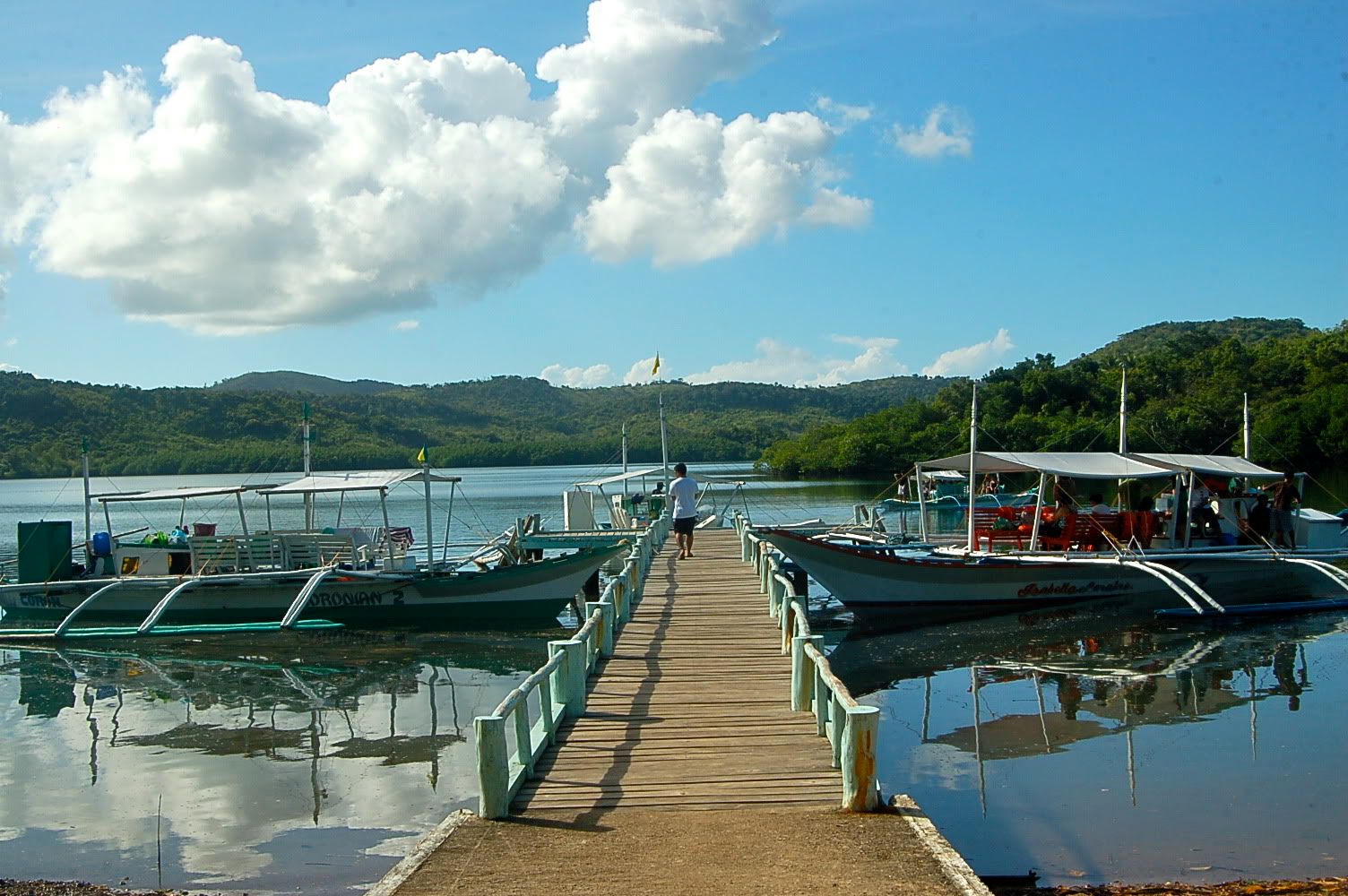I picked up Saturday's paper because a picture on the front page caught my eye--- that image of President Arroyo feeding the giraffes in Calauit Island. I was just there last November with Paul and two of our friends, and I never knew that the Tagbanuas (one of the oldest known IP's or indigenous peoples group in the country living in Central and Northern Palawan) actually had a claim over the island and its surrounding waters.
Read full PDI article/report here.
I learned from the article that the whole island of Calauit and a large portion of the sea surrounding it (which apparently forms part of their ancestral waters) have just been reclaimed by the Tagbanuas. For 30 years they fought to get their land back, and finally on Thursday, they were granted a Certificate of Ancestral Domain Title (CADT).
I had no idea that there was even an issue of ownership involving the IP's. I was under the impression that when then President Marcos decided to transform the island into a wildlife preservation and sanctuary, the island was State-owned. Apparently, it was not. The Tagbanuas were driven away by force and violence, and after 3 decades of trying to reacquire what is rightfully theirs, they are now free to go back and rebuild their community. It is expected that about 3,000 Tagbanuas will return to the island.
So, what now of the animals currently inhabiting the island? The truth is that prior to it being a wildlife sanctuary, Marcos used to visit the island to hunt wild boars and deers. The giraffes, zebras, and impalas were later on imported from Kenya and this paved the way to the island's transformation into a wildlife sanctuary. The IP's believe that their land was damaged by these animals and they prefer that the animals be farmed out to private groups who have expressed interest in rearing them. Of course, the provincial government believes otherwise and has manifested its intent to question the legality of the CADT (the government has plans of further boosting tourism in the Calamianes group of islands through the Calauit Game Preserve and Wildlife Sanctuary).
From how I see it, there is a big chance that these animals will be transferred somewhere else or be farmed out to private groups. It's quite difficult to imagine a scenario where the IP's and the animals can co-exist. As owners, the Tagbanuas are free to do whatever they want with their property, and if in the near future they decide not to give their consent to maintaining a wildlife sanctuary in their island, then the animals will have to go; the government will have to respect that.
-----
Here are a few pictures from our trip to Calauit Island last November.
calm, pristine waters surrounding Calauit
Calauit "port"
we left Coron town at around 4am and arrived in Calauit at around 7am
Welcome to the Calauit Game Preserve and Wildlife Sanctuary
welcoming committee
it was a hot...
hot...
...day.
feeding frenzy
Paul feeding the giraffe.
This was, of course, the highlight of the trip.
Calamian deer
the lone tiger in the safari ;)
mangroves
leaving Calauit
Apart from walking alongside zebras and feeding the giraffes (and the porcupines), there really isn't anything else to see or do in the island. It's really far from Coron town (2.5/3-hour land trip + 10-minute boat ride) and it's quite expensive to go there (6-6.5k for the van, 300 for the boat, 150 for the entrance fee). The animals look a bit malnourished; they don't seem to grow to their full size. One of the caretakers told us that they have been struggling with the problem of fresh water supply for years, and they're not getting much support from the provincial government. As it is, it's probably best to leave the care of the island to the IP's, and maybe it's time that the animals are sent back to their natural habitats.
Read full PDI article/report here.






















I was here a few years ago and really enjoyed it. Sayang naman if the animals are taken away. I doubt they'd survive in their natural habitats after being in this island-without-predators for so long. I hope the government can work with the IPs in maintaining the island safari. I'm happy for the IPs, but I'm sad for tourism. It was one of our unique spots. Oh well. :)
ReplyDeletethose photos are breathtaking. such a lovely place.
ReplyDeletei also noticed that animals there in the phils are skinny. kawawa naman.
manila girl: yeah nga, there's no place like it anywhere else in the PI ;) but i'm sure whatever they decide to do with the animals, they'll consider first and foremost the animals' welfare-- whether it be to keep them there, leave them in the hands of private groups/individuals or transfer them somewhere else or in their natural habitat.
ReplyDeleteibyang: thanks! and yeah, the animals don't look like they're getting proper nutrition.